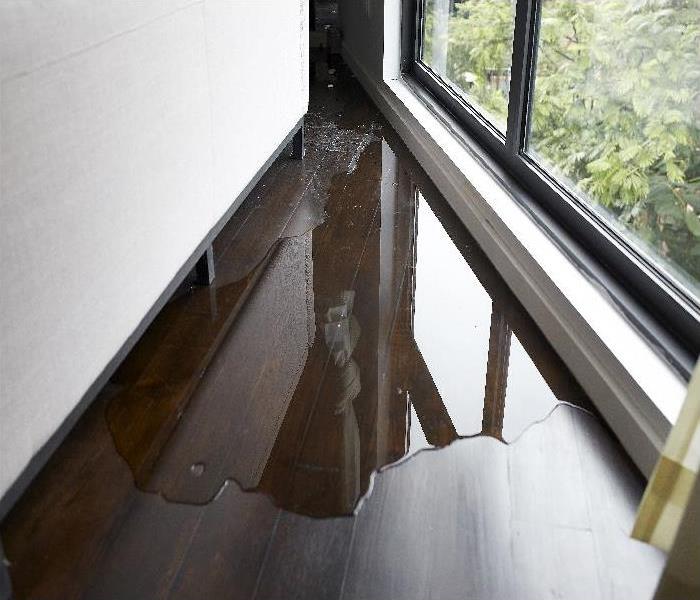Why Is The Science of Drying So Important to Water Cleanup in Raleigh?
9/18/2020 (Permalink)
 For water cleanup backed by scientific principles, call SERVPRO of North Raleigh & Wake Forest at (919) 790-1222.
For water cleanup backed by scientific principles, call SERVPRO of North Raleigh & Wake Forest at (919) 790-1222.
Raleigh Homeowners Need Water Cleanup Services They Can Rely On
Every homeowner in Raleigh has dealt with a water spill, whether from a toppled glass or an over-enthusiastic toddler soaking the bathroom at bathtime. When mopping up spilled liquid, most people do not stop and think about the science of it. After all, you are not in high school experimenting, you are merely keeping your home clean.
However, if you need water cleanup in Raleigh, the water damage restoration team you choose must understand drying science. A thorough understanding of the scientific principles means more effective work and a better result.
Why is the science of drying so important?
The science of drying means understanding how temperature, humidity, relative humidity, airflow, and the amount of water present, affects the drying process. Understanding the underlying principle is the difference between knowing that air movers and dehumidifiers can help remove moisture and understanding how that process works.
If the remediation team properly understands the science behind drying, they know:
• What kind of equipment to use to dry your home
• How to position devices for the best results
• Which monitoring tools to use when assessing water levels
• How to know when something is thoroughly dry, not just surface dry
• How to search for hidden damp patches
A well-informed team will get you better results because they know how to carry out drying to maximum effect. They also understand how to find hidden moisture and deal with it, which helps to prevent fungal growth in the future.
What does a restoration team need to know?
Before commencing water cleanup, SERVPRO technicians must understand:
• How temperature and humidity levels affect drying conditions, and how to manipulate temperature and humidity to create an optimum environment
• How to measure the amount of moisture air is capable of holding versus how much moisture it is currently holding
• How vapor pressure and dew point affect drying
• How water moves between solid, liquid, and vapor states
Armed with this knowledge, technicians can calculate the best placement and settings for extractors, pumps, air movers, and dehumidifiers.
How does SERVPRO ensure its technicians understand the principles of drying?
SERVPRO trains all our technicians to the Institute of Inspection Cleaning and Restoration Certification (IICRC) standards. The IICRC is the industry-standard body for restoration certification, and they have training programs that cover every aspect of water cleanup and repair.
All our franchise owners attend a fifteen-day hands-on course at our central training facility to ensure they understand every remediation aspect. Our teams also have access to ongoing e-training to help them stay updated with the latest industry best practices and drying techniques.
Because SERVPRO of North Raleigh & Wake Forest has access to nationally-accredited training courses, you can rest assured your home is in good hands.
What is the difference between open and closed drying?
One of our team's critical decisions is whether to use an open or closed drying system to dry out your home. But what is the difference?
An open drying system means exchanging the humid air inside your home with the drier air from outside. For open drying to be effective, technicians must accurately measure the humidity of both inside and outside air. We equip our teams with a range of equipment, such as thermo-hygrometers, to measure the air's moisture content.
Open drying means opening doors and windows and using air movers to bring about the air exchange. Because our teams understand the science of drying, they know how many air movers to use and where to position them.
A closed drying environment does not use air from outside but instead focuses on removing moisture from the indoor air. The technician will close off the affected area and use air movers and dehumidifiers to remove the air's moisture. In some cases, they will also use a negative air machine.
Whether to use closed or open drying depends on many factors, including the humidity levels inside and outside, the temperature, the weather, and any security concerns regarding leaving doors or windows open. Constant monitoring helps our technicians keep the drying process on track. Because our teams are well-versed in drying science, you can trust them to make the right call.
What happens after the water cleanup?
Once the SERVPRO team has removed water and dried your home, we deodorize it. We aim to leave your home “Like it never even happened,” and deodorization is an essential part of making your home feel fresh and clean again.
We use air scrubbers, charcoal filters, fogging, and spot cleaning as needed to remove odors from your home.
Our team will check in with you a week after cleanup to make sure you are satisfied.
For water cleanup backed by scientific principles, call SERVPRO of North Raleigh & Wake Forest at (919) 790-1222.

 24/7 Emergency Service
24/7 Emergency Service